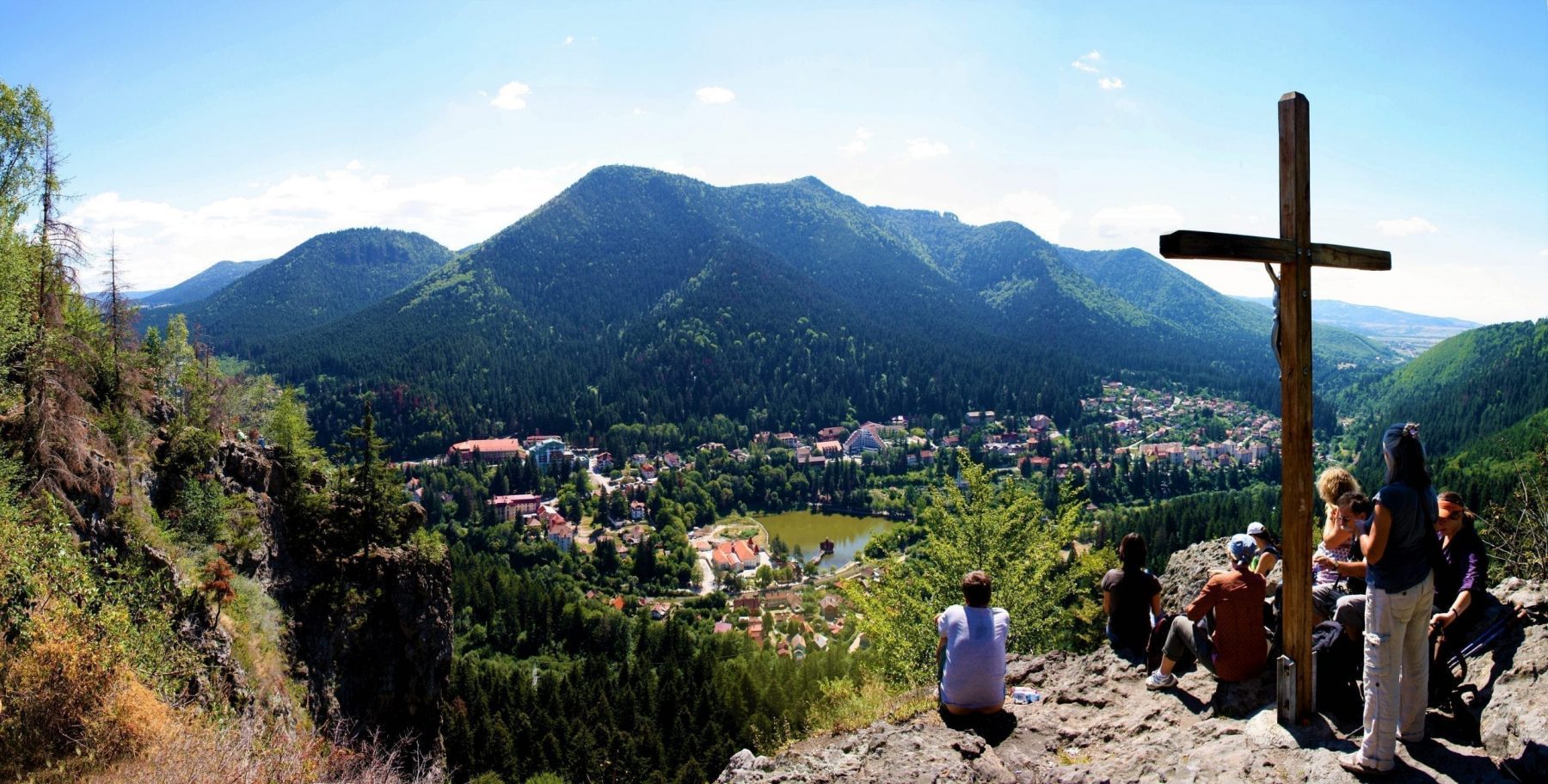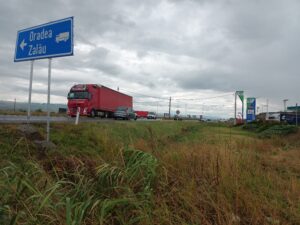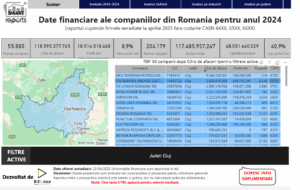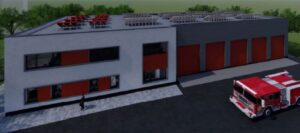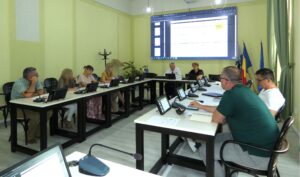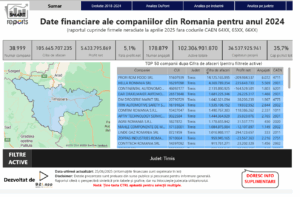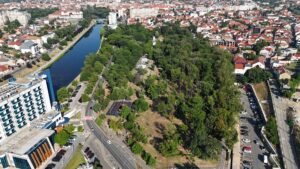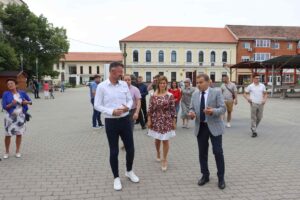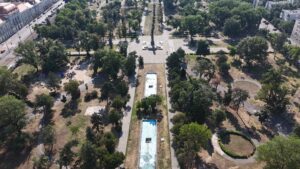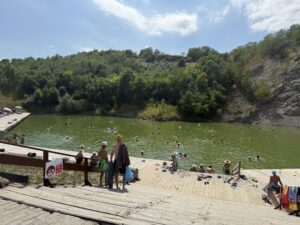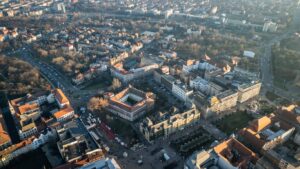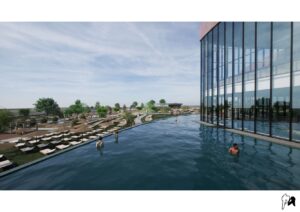Well-known for its enthusiasm for winter sports, famous for its Ciuc Beer, mineral waters and plum brandy, remarkable for its volcanic mountains and natural wonders, Harghita County is home to many historical and ethnographical treasures, to which the beautiful natural background is given by valleys, rivers and the gentle hills of the Eastern Carpathians, is a unique place certainly worth visiting during your stay in Transylvania.
“You can find four of the seven wonders of Transylvania in Harghita County, and we have so much more to offer for you.”
About Harghita County
If someone has once seen the only volcanic lake in Central Europe, the Saint Anna Lake, if one has once seen the green valleys of the Harghita Mountains rising over 1,800 meters above sea level, or the legendary landscape of Red Lake, it is certain that he/she will miss these wonders.
Harghita County is situated at the meeting point of the Eastern Carpathians and the Transylvanian Basin that are the borders of the Carpathian basin. Its history includes not only the history of the people who lives here, but also the past of the region.
The county has a predominantly mountainous relief with the Eastern Carpathians covering the largest part of the territory. Mountains, basins and hills are spread all over the county. 60% of the county’s surface is wood and highland.
You can find one of Europe’s greatest, about 170 km long, volcano mountain chain, the Caliman-Gurghiu-Harghita Mountains, in the center of the county. The Caliman Mountains deepened by glacier, a single volcanic massive, dominate the landscape in the north. The Gurghiu Mountains situated between the Mures valley and Liban pass is made of the volcanic mountains of Fancsal and Mezohavas, Sumuleu and Delhegy. The Harghita, out county’s name-giving mountain is made of more volcanic structures. In the middle, the Gurghiu Mountains and the volcanic Harghita rise above the Gheorgheni Basin, situated at the upper part of the Mures gorge. The other basins, Borsec and Casin are characterized by plains and slight slopes, with wide, sometimes marshly river flats. The western side of the county is a part of the great Transylvanian basin through the Sovata-Odorhei hill-line and the Tarnavele Hills.

Because of the volcanic post-acting, Harghita County has the greatest colony of carbonized mineral water with the most varied chemical substances. The tourist and the explorers are attracted by more than one thousand mineral water springs and mofettas, which the inhabitants call “stinking pits”.
At the north of the county is in neighborhood with Suceava County, at the east with Neamt and Bacau, at the south with Brasov and Covasna, and at the west with Mures County. If you want to visit us with airplane, the nearest airport is in Targu Mures, but Sibiu and Bucharest are available too.
The weather is characteristic for this type of geographical area: cold winters, but optimal for practicing winter sports, pleasant and refreshing summer breezes and a long, colorful and sunny fall. Stemming from its volcanic origin, the unique microclimate of the region provides several balneary and climatic resorts for treatment of a wide range of illness.

Harghita‘s fauna is very complex represented by deer, wild bears, ferrets, rabbits, wolves, brown bears, martens, lynxes and many others. The flora is represented by beech, holm, hornbeam, maple, spruce, fir, ice age relict plants and other species of plants.
Harghita Treasures of the Szekler Land
According to Wonders of Transylvania, five of the seven wonders are in Harghita County: the Red Lake and the Bicaz Gorge, Lake Saint Anna, the Virgin Mary statue of Sumuleu Ciuc and the mineral water springs.
Based on this list we started collecting special places in our county, which are considered unique and become our treasures. Below we present some of these.
Lake Saint Anna

The only volcanic lake in Central and Eastern Europe, located in the Carpathian Mountains in the Eastern-Central part of Romania, formed in the bottom of Ciomatu Massif’s southern crater, being one of the most visited travel destination of Transylvania.
The Carpathian volcano erupted about 32,000 years ago. In this area, there were two craters of lava. After the last eruption, one became the Saint Anna Lake and the other become some sort of volcanic swamp, the Mohos Bog.
There are many legends that are linked to the name of the lake. According to the locals, long ago, there was a girl named Anne that lived in the area. Before the existence of the lake, two wealthy men used to live in these parts. They were always in competition who had the most amazing objects of fortune. The man who lived where the lake is now had the idea to buy himself a golden chariot and to use young girls from the village instead of horses. The girls tried to move the chariot but it was way too heavy for them. The man, desperate for acknowledgment of his wealth and his idea started whipping the poor girls. One of them, named Anne, mumbled a curse. The next minute, the ground started shaking and crashing down, with the girls, the man and the chariot. It is said that all the water in the lake is actually from the girl’s tears.
SkiGhimes

The longest bobsleigh in Romania, located in Ghimes. A bobsleigh track, set up in Lunca de Sus commune, has become, in a very short time, an attraction for the tourists visiting the Ghimeş area or for the adrenaline lovers who come here to experience this sensation. Besides the adrenaline, tourists can enjoy a beautiful landscape, which many compare with those seen in Austria or Switzerland.
The Heart of Jesus

The tallest statue of Jesus in Eastern Europe. In 2011, the largest statue of Jesus in Eastern Europe was built on Gordon hill in Harghita, between Odorheiu Secuiesc and Praid. Called “the Heart of Jesus”, the statue is about 22 meters high, and is made of iron and stainless steel.
Inside the statue, there are metallic spiral staircases up to the head, from where you could admire the wonderful view around.
Bears

In Romania, there are more bears than in all of Europe. There are about 1,500 bears only in Harghita County. In recent years the bear watching tours become popular activities among tourists.
Bicaz Gorge

An extremely picturesque geographic area. The Bicaz Gorge is located in the North-East of the country, in the Hasmas mountains, it is part of the Cheile Bicazului-Hășmaș National Park. It is considered among of the most beautiful gorges in Romania accessible to the tourists. The gorge was excised by the waters of Bicaz River and it serves as a passageway between the Romanian provinces of Moldova and Transylvania. The road along the 8 kilometres of ravines, often in serpentines with rock on one side and a sheer drop on the other, is one of the most spectacular drives in the country. Also within the gorge is the famous Red Lake.
Cheile Bicazului is one of the main rockclimbing sites in Romania.
Salt Canyon and mountain

One of the largest salt reserve in Europe. The Salt Mountain from Praid is one of the most interesting attractions of Transylvania. This geological reserve, which covers 66 ha of land, lies on the south-western part of Praid bath resort, at 576 meters above sea level. The Salt Mountain is said to have 3 km in depth and has an elliptic shape, its diameters being 1.2-1.4 km long, and its vertical extension gives a mushroom shape to the mountain.
The shape of mountains that we see today is the result of the eroding activity of the Corund brooks combined with human activity as well. Here, along the Corund brooks valley we find the salt gorge, with formations similar to those of limestone. We can find salt dolines, salt caves, salt-cliffs, water run-offs, all these forming the protected area.
Sumuleu Ciuc

A very important pilgrimage place, visited by about 600,000 people each year. The Şumuleu Ciuc/Csíksomlyó Pentecost pilgrimage began in 1567, a vow of pilgrimage of Szeklers for the protection of their Catholic faith, which has become the most significant pilgrimage of Hungarians since 1990.
According to the chronicles, the first pilgrimage to Şumuleu Ciuc, with the leadership of priest István, was started from Joseni more than 450 years ago.
The Franciscan church of Șumuleu Ciuc is one of the most famous architectural monuments, being the most important place of pilgrimage in Transylvania. The main adornment of the church is the wondrous statue of the Mother of God, placed on the main altar of the church. The linden wood sculpture represents the Mother of God holding the infant Jesus, as described by the Book of Revelation – The Woman Dressed in Sun. The sculpture, probably dating back to the 16th century, made of a linden trunk, painted and gilded, is the largest votive sculpture known in the world, having a total height of 227 cm.
Mohoş Bog / Swamp
Protected ecosystem near Saint Anna Lake, with hallucinogenic and carnivorous plants. Near the Saint Anna Lake you can see a second volcanic crater that turned itself into a swamp with volcanic ash and now it is named Mohos Swamp. It can only be visited with a guide and only on marked trails and bridges made of wood. It can be dangerous to step out of the trails. There is a tricky soil that, in some places, can be very soft and can act like quicksand.
The Mohos Swamp is famous for its ice-age relict plants. Moreover, specialists have proved that the area is interesting not only from a botanic, but also from a zoological point of view, being the habitat of a number of rare arthropods.
The Mereşti cave
The longest cave in the County, with eight chambers and a length of 1,527 m. Located in the middle of Varghis gorges in the Persani Mountains, Meresti cave is a speleological jewel, considered by the speleologists as one of the longest caves in the Eastern Carpathians. The cave is on the right wall of the Varghis gorges, near a bridge, in the so-called Rock of Wonders.
Fântâna Brazilor Bog
Site of community importance, with a surface of 41 hectares. Fântâna Brazilor bog is located at an altitude of about 950 m, in the Central-Western part of the Praid-Dealu volcanic plateau, in Gurghiu Mountains. The plateau is composed of volcanic-sedimentary formations. At the Western outskirts of the plateau, water erosion revealed Pontian sedimentary deposits and salt. The Fântâna Brazilor bog was declared a Natura 2000 site in 2007. It appears as Luc or Ruc in the literature, but locals generally call it Datka.
Inlăceni
The village won the “Europa Nostra” award. In the South-Western part of Harghita County, 25 km away from Odorheiu Secuiesc and 18 km away from Cristuru Secuiesc, lies Inlăceni, a village unchanged for hundreds of years, beautiful as in the stories of childhood.
The age of the houses is measured in centuries, most of them rural architecture monuments raised in a time when the planks were joined together with wooden slats. They look very similar with each other.
Built of stone and wood, they are painted white or azure, covered with tiny tiles made in the village, and the flower garden in front of the house is indelible. The entry in the house is made through a mezzanine, by climbing a wooden ladder or a few steps made of stone. The ground floor and the basement are reserved for the kitchen, the storage rooms and the cellar.
The Fortified Church in Dârjiu
The only UNESCO monument in Harghita County. The Dârjiu Church, declared a UNESCO monument in 1999, is one of the most important fortified churches in Transylvania.
The most valuable assets of the monument are the wall paintings from the 15th century, of which the most important is the series of paintings depicting the legend of St. Ladislau, made in 1419 at the behest of István Ungi’s son. The paintings are in a very good condition.
Among the church’s attractions is the brick found in 1929 with Szekler runic writing, still visible today. The experts date the creation of this brick somewhere between 1274 and 1431.
Corund
Village known as a traditional pottery center. Corund pottery is specific for the region of Corund in Harghita County. After the clay was well cracked with some water and cleared of impurities, the cuted strips are molded on the pottery wheel until it has the desired shape. After a few days of drying, the bowls are burn in highly heated oven. The Corund pottery is painted by craftsmen with stylized floral and zoomorphic designs. Ceramics can be white, brown, blue (cobalt) or multicolored.
Praid Salt mine

Located at a depth of 120 m, it offers an unforgettable experience. The recreational base of the Praid salt mine is located at „Horizon 50”, which is 120 m below the surface. The salt buses transport the people 1,250 m through the mine, to the entrance of the recreational base.
Once you reach the Recreation Center, you can enjoy all the facilities of a small community: lighting, wireless access, television, children’s playgrounds, creative and recreational spaces, ecumenical chapel, café, 3D cinema and a drugstore with herbal products. You can also enjoy wine tasting, or eat from the varied menu prepared by the salt mine restaurant.
During the year, around 400,000 people visit the Praid salt mine.
Mofettas
The Harghita Baths, Sântimbru Băi Baths offer efficient treatment possibilities. One of the natural riches that our country are the mofettas. Originating from the Latin term „mephitis”, which means „nifty emanation,” mofettas are gas emanations that can appear through earth’s cracks in the final phases of volcanic activity, through drilling, degassing of mineral waters, or can be made artificially.
Although mofettas are also found in France, Italy, Java Island or Yellowstone National Park (USA), the ones in Romania are unique through the emanations of dry gas rich in carbon dioxide (95-98%), a very effective therapeutic factor. Also, mofettas from our country, contain rare gases such as helium and radon, which complement the curative effect of mofetta therapy.
(From the special edition of TB 86 – „ENJOY TRANSYLVANIA!” – May/June 2019)




